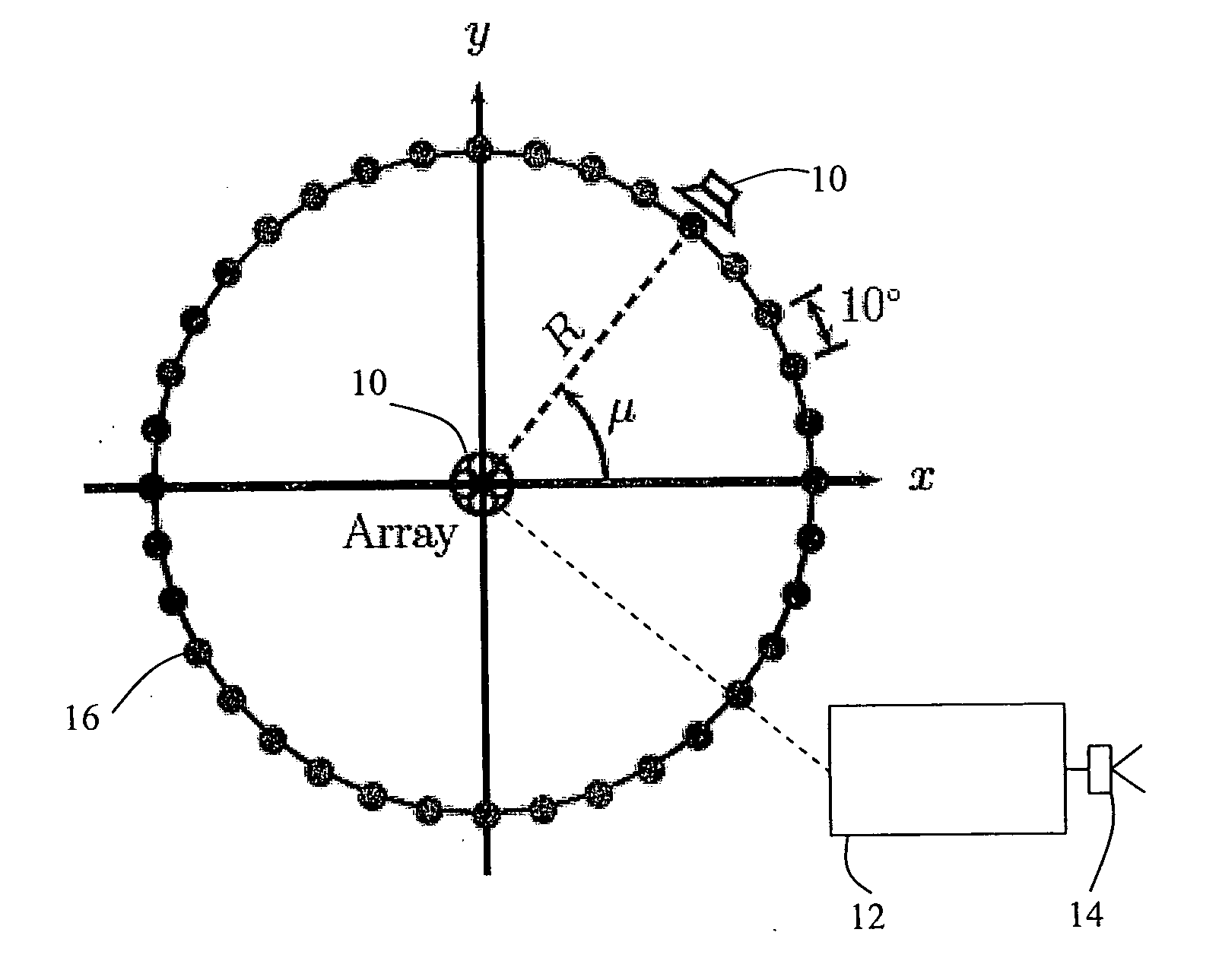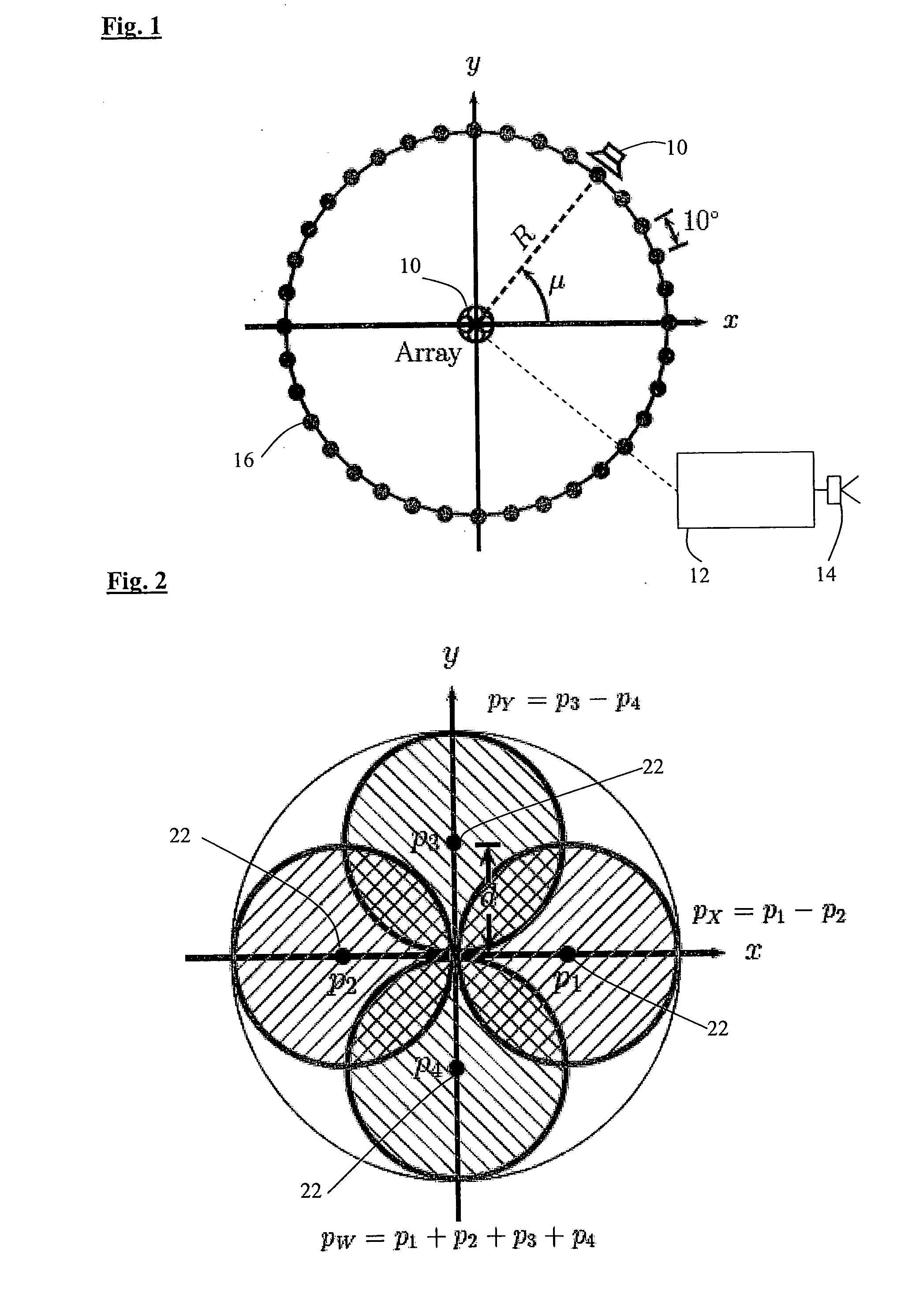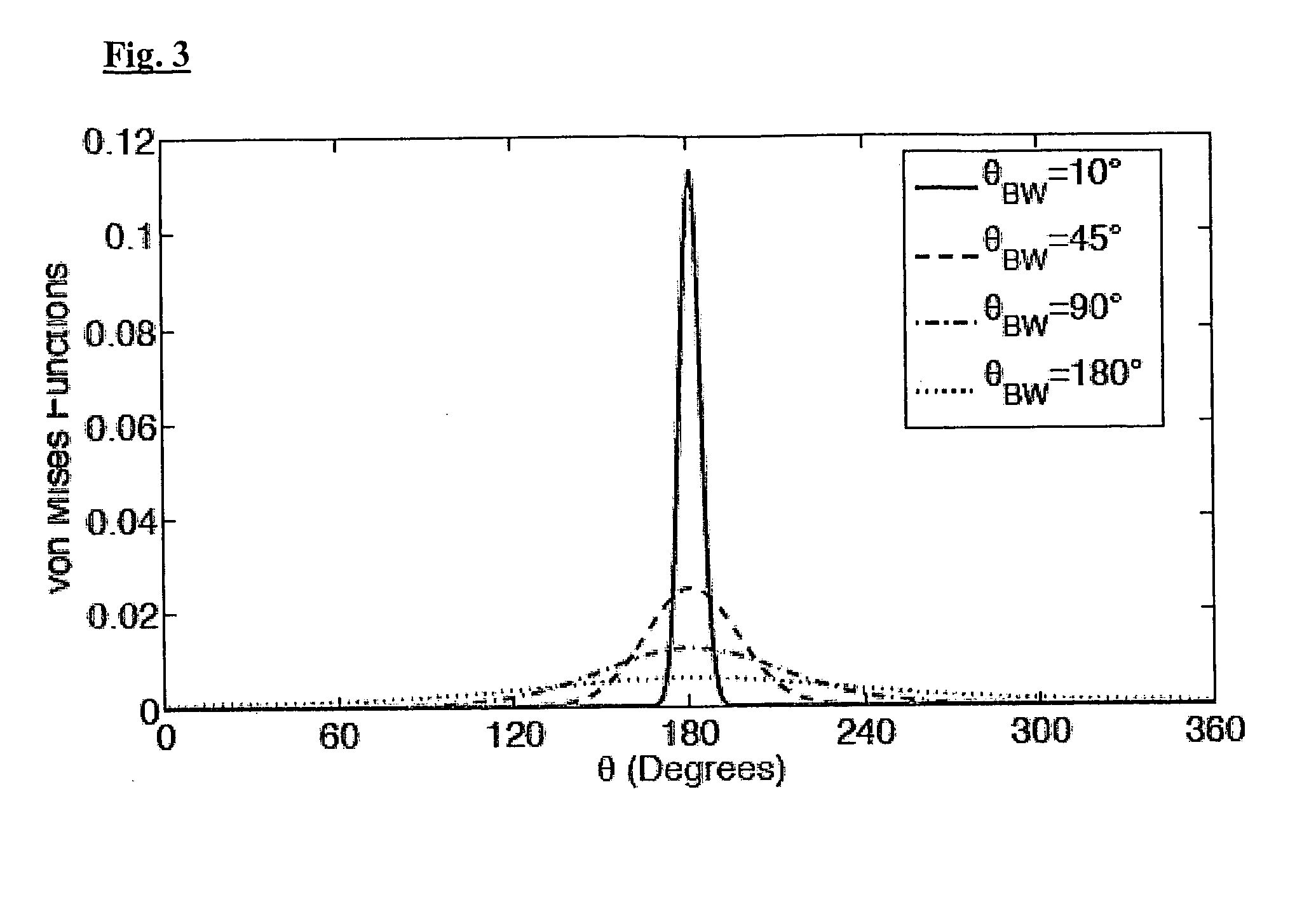Acoustic source separation
a technology of acoustic source and separation, applied in the field of acoustic signal processing, can solve the problems of low signal efficiency, low signal quality, and high computational cost of stochastic methods,
- Summary
- Abstract
- Description
- Claims
- Application Information
AI Technical Summary
Benefits of technology
Problems solved by technology
Method used
Image
Examples
Embodiment Construction
[0053]Referring to FIG. 1, an audio source separation system according to a first embodiment of the invention comprises a microphone array 10, a processing system, in this case a personal computer 12, arranged to receive audio signals from the microphone array and process them, and a speaker system 14 arranged to generate sounds based on the processed audio signals. The microphone array 10 is located at the centre of a circle of 36 nominal source positions 16. Sound sources 18 can be placed at any of these positions and the system is arranged to separate the sounds from each of the source positions 16. Clearly in a practical system the sound source positions could be spaced apart in a variety of ways.
[0054]Referring to FIG. 2, the microphone array 10 comprises four omnidirectional microphones, or pressure sensors, 21, 22, 23, 24 arranged in a square array in a horizontal plane. The diagonals of the square define x and y axes with two of the microphones 21, 22 lying on the x axis and...
PUM
 Login to View More
Login to View More Abstract
Description
Claims
Application Information
 Login to View More
Login to View More - R&D
- Intellectual Property
- Life Sciences
- Materials
- Tech Scout
- Unparalleled Data Quality
- Higher Quality Content
- 60% Fewer Hallucinations
Browse by: Latest US Patents, China's latest patents, Technical Efficacy Thesaurus, Application Domain, Technology Topic, Popular Technical Reports.
© 2025 PatSnap. All rights reserved.Legal|Privacy policy|Modern Slavery Act Transparency Statement|Sitemap|About US| Contact US: help@patsnap.com



